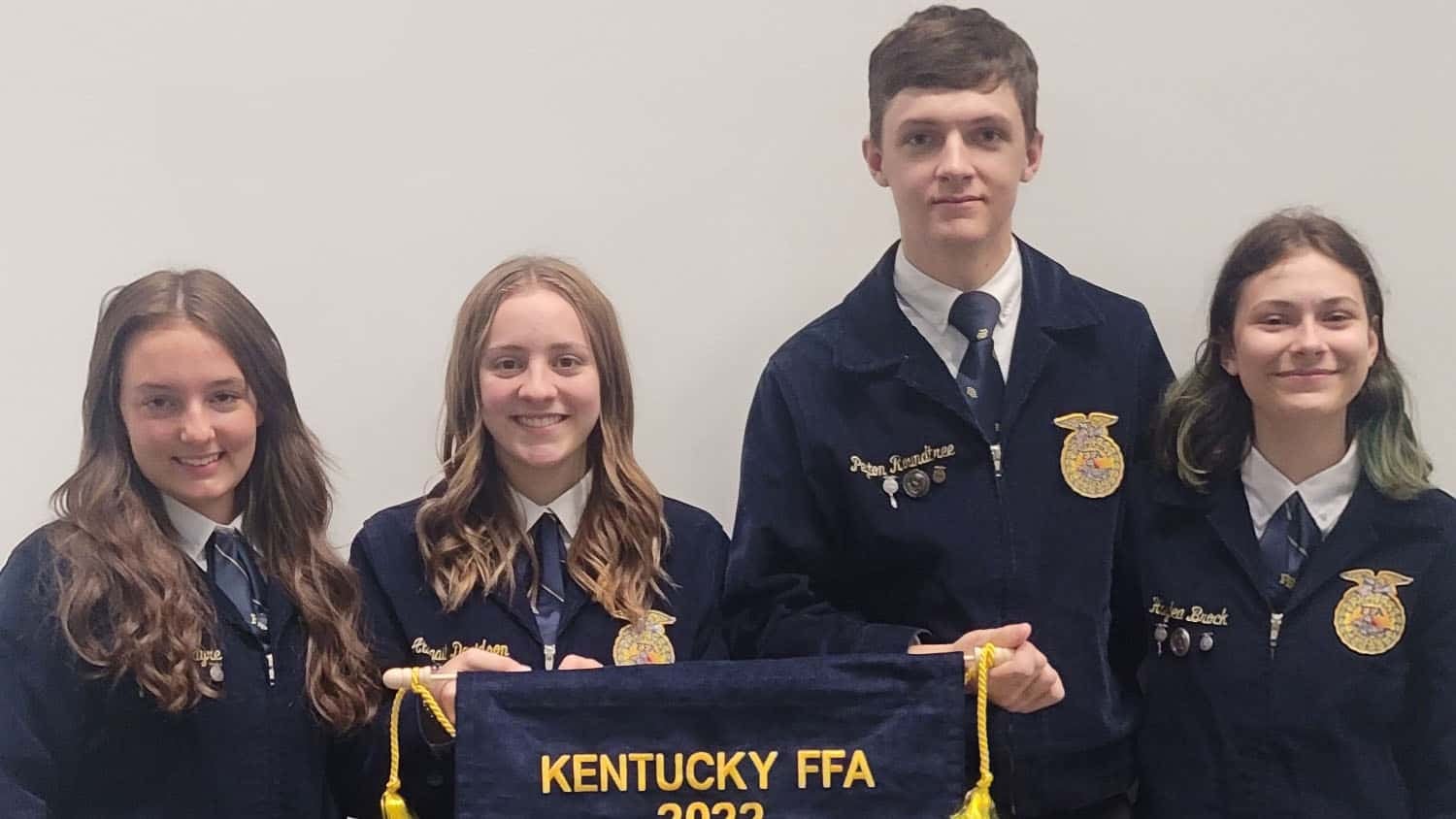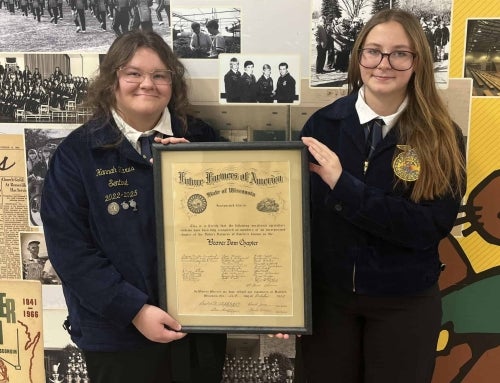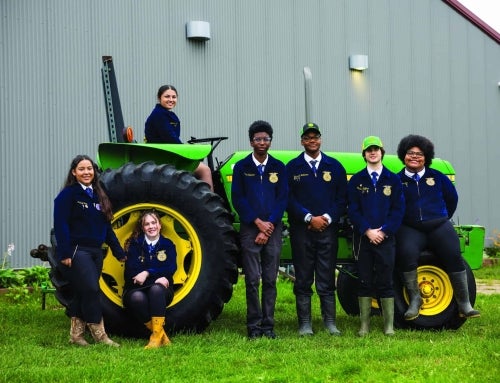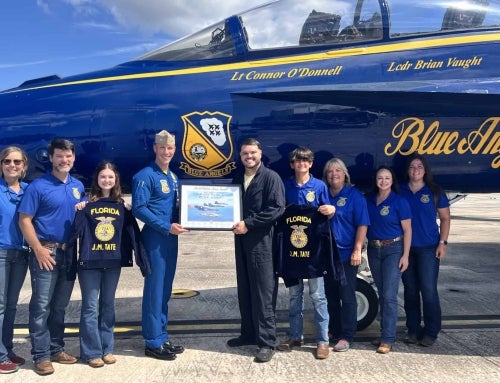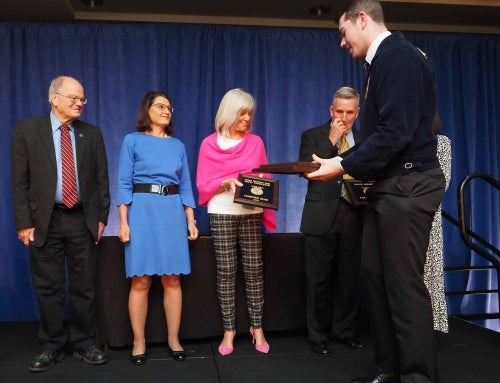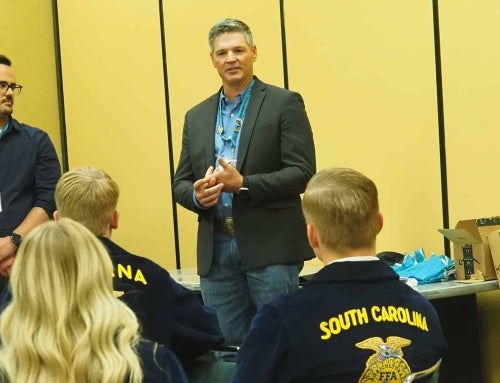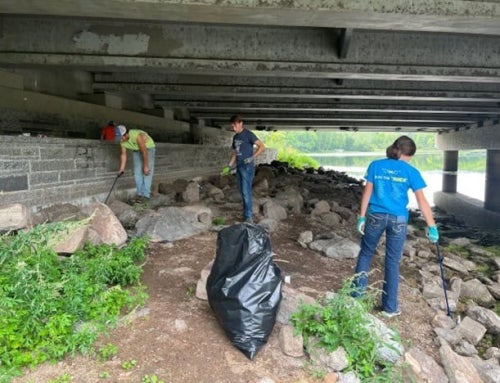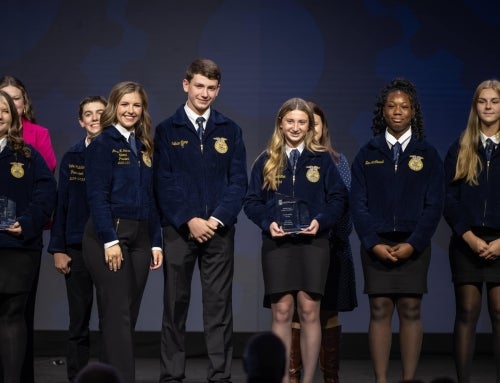Talk about a real-world experience. Competition in the environmental and natural resources career development event (CDE) at this year’s national FFA convention brought teams of four out in the elements to test their problem-solving and decision-making in environmental and natural resource issues.
Visiting a local farm, competitors used a variety of skill sets–including knowledge of soil science, water management and GPS navigation–to gather and interpret data. Team presentations followed.
For Haylea Brock, a senior member of the North Laurel FFA in Kentucky, the competition is the perfect springboard to her future.
“I’ve always been interested in engineering, but now I know there’s a career where I can combine engineering with natural resources. This competition helped me determine that environmental engineering is what I want to pursue,” Brock says.
Brock was the national high individual in the environmental and natural resources CDE at the 95th National FFA Convention and Expo. Her team of Maggie Hayre, Abigail Davidson and Peyton Roundtree (pictured above, left to right) placed second overall. All team members received a National Gold Rating, placing them in the top third of all individual scores for the competition.
As Brock explains it, the competition encompasses a variety of skill sets, which build up to the national contest. “There’s always a soils topic. You must be able to tell the texture of the soil and what cropping practices are best suited for that soil. There’s a water component to determine aquatic diversity, determine the results of a water test and understand a watershed. At the state level, there’s a forestry component where you judge trees like a professional forester. And then there’s a wildlife component where you must identify endangered species and factors that affect all wildlife,” she says.
The soils category is probably the most challenging, Brock says. “There’s so much to the soils category that is part of all other categories. Not only do you have to be able to tell the physical characteristics of the land, like the slope and the types of wildlife and trees that are on it, but you need to understand how that affects the land’s capability. You have to be able to assess the soil itself between its textures, its nutrient levels and the structure of the soil.”
Using that information, team members identify best management practices for the land. “There is a lot of memorization, but there is also a lot of problem-solving because you have to understand how every aspect of your soil profile affects the best land-use practices,” Brock says. “Because soil connects to everything.”

